


I’ve been practicing Pilates for a little over 3 years. When I started, I took a combination of privates and small group classes, but since I retired, I take mostly private sessions – and a few semi-privates. When Carey encouraged me to come to a Pilates class offered by a visiting instructor, I was terrified. My comfort zone is now in private sessions with a teacher I know very well!
You have to understand, for the last 15 years of my work life (before retirement) I traveled between 20-30 weeks per year. I watched a lot of reality tv in hotel rooms. I have anxiety when I think of personal trainers and fitness instructors from watching the Biggest Loser on TV. I’m pretty sure I’d have a heart attack, or a total body collapse if I was in a gym with a trainer yelling at me to run on the treadmill! So in my head, I pick the safest route, and generally that does not include taking a fitness class with a new instructor. I did join a gym locally 4 years ago. I went for maybe 2-3 months to a couple of classes a week – but the classes involved lifting weights without much personal attention (or detailed instruction) – so I was terrified that I would hurt myself and I quit going.
The class I was invited to was called Restorative Pilates. Ok — that’s a pretty non threatening title, so I’m not sure why it frightened me. I had no idea what to expect. I knew I had met the instructor before, and I was pretty sure that he was not the yelling and screaming type!
On that Saturday morning, I decided to put on my Pilates pants and go to class. The first thing I noticed was that I wasn’t the only one that was nervous. There were other students in the class going up to Carey and asking her to tell the visiting instructor that they had this or that going on – so they would be modifying some exercises. Another student was really nervous that she wouldn’t be able to do some of the exercises. Uh Oh. It was time to start class.
What was class like? It was terrific. The guest instructor (Len) started teaching. We started with the most basic of Pilates fundamentals – breathing. Len’s cueing was amazing and after practicing breathing for a few minutes – we started at our toes – and flexed and stretched most every muscle in our bodies. When he asked us to do hundreds – he gave so many modifications that everyone could feel good about doing their best hundreds – and after class, I felt great! I went, I completed the class, the world did not blow up and I felt really good about class! Here’s a tiny sample!
The moral of the story? Don’t be afraid of taking a class from a different instructor! I learned things from that class that I use every day to make my body feel better! Len’s ability to paint a picture that compared Pilates movements to everyday tasks gave me new ways to visualize the exercises that I was doing and I had a great time! Of course, I took some pictures and a few videos so I would have them for this blog, and it seemed like after the class — everyone was feeling the same way!
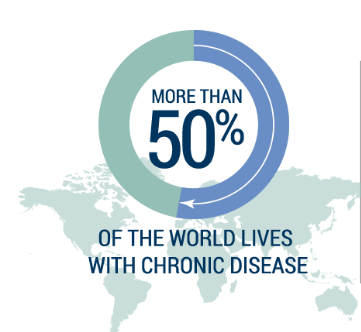 I’m guessing if you’re reading this post either you or someone you know has a chronic disease. If this is the case then you probably are aware of all of the wonderful benefits that exercise can have in dealing with your disease. You’ve heard about how exercise can enhance your mood, make your body feel better and help you deal with the day to day stress of dealing with whatever craziness is going on in your body. But you may not believe any of this.
I’m guessing if you’re reading this post either you or someone you know has a chronic disease. If this is the case then you probably are aware of all of the wonderful benefits that exercise can have in dealing with your disease. You’ve heard about how exercise can enhance your mood, make your body feel better and help you deal with the day to day stress of dealing with whatever craziness is going on in your body. But you may not believe any of this.
You may think that just getting out of bed in the mornings is sometimes the most exercise you can handle. You may be terrified of walking into a group setting where you are not sure of what you were doing or if you are even capable of doing what is asked. What if I told you there was a type of exercise available that would make you feel better, that could be tailored specifically to how your body was feeling on any given day and could be practiced in a one on one setting, in a small group setting or even on your own at home?
The Pilates method of exercise is truly adaptable to any body and can be an amazing health tool in your life. The best way to get started is to set up a time to talk and work with a Pilates teacher one on one. Many Pilates teachers offer a complimentary first session so that they can introduce you to the method and have a chance to show you how it can be adapted to whatever is going on in your body.
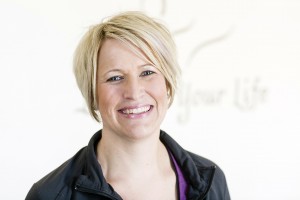 As a Pilates teacher and movement nut I can tell you I love to talk about mindful movement and the benefits of Pilates in your life. But I can tell you as a studio owner the reason so many clients tell me they love our studio has nothing to do with the quality of our teaching (and our teachers are fabulous!… I have some of the best trained, most amazing movement teachers around on staff.) The number one compliment I get from clients is about the amazing community that exists within our studio walls. That’s right…the community, the tribe of people who consider Rivercity Pilates one of their home away from home places.
As a Pilates teacher and movement nut I can tell you I love to talk about mindful movement and the benefits of Pilates in your life. But I can tell you as a studio owner the reason so many clients tell me they love our studio has nothing to do with the quality of our teaching (and our teachers are fabulous!… I have some of the best trained, most amazing movement teachers around on staff.) The number one compliment I get from clients is about the amazing community that exists within our studio walls. That’s right…the community, the tribe of people who consider Rivercity Pilates one of their home away from home places.
You see, very few people actually enjoy exercising (surprise right?). But most of us know how important regular movement and exercise is to living a long, happy life and so we try to incorporate it into our life. So even though I know our clients appreciate our highly trained, knowledgeable instructors, I truly think the the reason they keep coming back and the reason they are so successful at consistently adding movement into their life is because of their RCP tribe. Their Rivercity Pilates tribe gives them support, connects them to others, and makes them laugh every time they are here. Their Rivercity Pilates tribe makes exercising fun!!
 We all need a tribe or two in our life. We need people outside of our immediate family and friends who share similar interests, are going through similar things and who are just fun to hang out with. And what could be better than a tribe who is just like you…just trying to live your best life by balancing out healthy habits like exercise while juggling families, juggling careers and just trying to enjoy life.
We all need a tribe or two in our life. We need people outside of our immediate family and friends who share similar interests, are going through similar things and who are just fun to hang out with. And what could be better than a tribe who is just like you…just trying to live your best life by balancing out healthy habits like exercise while juggling families, juggling careers and just trying to enjoy life.
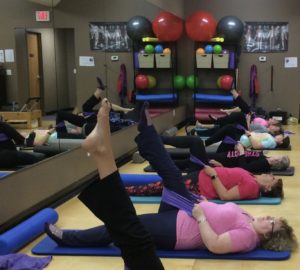 Personally, our tribe, our community at Rivercity Pilates is probably the thing I’m most proud of when it comes to my business. I absolutely love to come to work and get to check in with clients and see how their week is going, I love that I get a chance to really know clients which in turn helps me to better help them reach their health and fitness goals. I love how friendly everyone is to each other and how supportive everyone is. I love that clients chat and laugh with each other throughout class. I love to see class participants catching up with each other before and after class.
Personally, our tribe, our community at Rivercity Pilates is probably the thing I’m most proud of when it comes to my business. I absolutely love to come to work and get to check in with clients and see how their week is going, I love that I get a chance to really know clients which in turn helps me to better help them reach their health and fitness goals. I love how friendly everyone is to each other and how supportive everyone is. I love that clients chat and laugh with each other throughout class. I love to see class participants catching up with each other before and after class.
Are you looking for a tribe? Are you one of those people that knows they need to exercise and move more but sometimes just can’t motivate yourself to do it? We would love to introduce you to the Rivercity Pilates tribe!! Get started by scheduling a one on one session with one of our amazing teachers or start with a complimentary group class. We would love to meet you!!
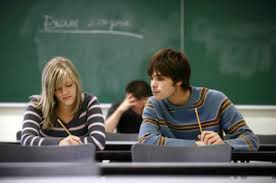 Most of us are naturally visual learners when it comes to movement. In many ways this can be very helpful. When our body is trying to figure out how to do a new skill or movement it needs all the input it can get to try to figure out what it is trying to accomplish and how to do it. Visually seeing something is one of the many ways that your brain processes what it is trying to do. The problem with visually watching something and trying to repeat it is that when we don’t do the movement exactly like what we saw we get frustrated and sometimes overwhelmed! We start to feel like we are failing or not getting something out of the movement because it does not look a certain way.
Most of us are naturally visual learners when it comes to movement. In many ways this can be very helpful. When our body is trying to figure out how to do a new skill or movement it needs all the input it can get to try to figure out what it is trying to accomplish and how to do it. Visually seeing something is one of the many ways that your brain processes what it is trying to do. The problem with visually watching something and trying to repeat it is that when we don’t do the movement exactly like what we saw we get frustrated and sometimes overwhelmed! We start to feel like we are failing or not getting something out of the movement because it does not look a certain way.
As Pilates teachers we know that the goal of an exercise is not to “look a certain way”. The goal of an exercise involves gaining strength and flexibility in a balanced way as you do a skill like articulating through your spine or moving your leg in space while supported from your core muscles. Accomplishing the goals of an exercise can look very different in different bodies. This is why as teachers we often try to use our words to describe an exercise instead of just demonstrating an exercise. We also try to give options in a multi level class on how you can do the movement best in your body.
At our studio we have a variety of clients, with a variety of different body shapes, sizes and different injuries or ailments. You can often peek at a Pilates class and see many different bodies doing what looks like very different things even though they are all doing the same exercise. If you are new to the Pilates method of exercise and just starting to take classes this can be super confusing. Because we are not accustom to taking verbal cues to learn new movements, the first thing new clients often do in class when learning something new is look at their neighbor and try to repeat what they are doing. But what happens when your neighbors in class are doing what looks like two completely different things? Your brain and your body get overloaded with confusion!!!
So my best advice for new clients is to try to avoid just watching other clients to learn exercises. Do your best to listen to the explanations of the movements and the goals of the exercise that your teacher is saying. If this is hard for you…you are not alone! Know that this way of learning often takes some practice- so don’t be too hard on yourself! Try not to worry what the movement looks like but instead focus on how it feels. If you have specific questions about how you could get the most out of an exercise in your body definitely ask your teacher. If you are not comfortable doing this in class or before or after class, maybe try a one on one session where your teacher can give you individual attention on each exercise.
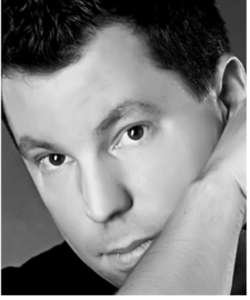 This blog is the 2nd blog by guest blogger and Pilates instructor Trent McEntire of McEntire Pilates. In Trent’s first blog, he talked about knowing your bone density scores, and sharing your bone density scores with your Pilates instructor, so you can actually watch your scores over time to see if Pilates is helping to reverse your osteoporosis.
This blog is the 2nd blog by guest blogger and Pilates instructor Trent McEntire of McEntire Pilates. In Trent’s first blog, he talked about knowing your bone density scores, and sharing your bone density scores with your Pilates instructor, so you can actually watch your scores over time to see if Pilates is helping to reverse your osteoporosis.
Osteoporosis is a disease where bones are weakened and can easily break especially in the hip, spine, and wrist. Bone is considered living tissue. Throughout life, this tissue is broken down in the body and replaced with new bone. For some individuals, the bone continues to break down but is not easily replaced with the new. The inside of a healthy bone looks like a honeycomb. When afflicted with osteoporosis, this honeycomb structure develops larger spaces that indicate loss of bone density and strength.
Osteoporosis is often referred to as a “silent” disease. In the early stage, the individual feels nothing until a bone breaks usually in the hip, spine, or wrist.

The good news is that bone is a living tissue. Just like a muscle, the bone can be strengthened. In many situations, stronger bones can slow and even reverse the effects of osteoporosis.
Additional factors include having experienced menopause especially at an earlier age, being diagnosed with certain diseases such as rheumatoid arthritis, and participating in prolonged use of cigarette smoking and/or alcohol.
Men may also be at risk. According to the International Osteoporosis Foundation (2015), “it is estimated that the residual lifetime risk of experiencing an osteoporotic fracture in men over the age of 50 is up to 27%, higher than the lifetime risk of developing prostate cancer of 11.3%.”
Bones weakened by osteoporosis eventually exhibit other symptoms such as loss of height over time, other bone fractures that occur easily, increased back pain, and a stooped posture.
Those most affected are Caucasian and Asian women. Though, any woman can be at risk especially one with a family history of osteoporosis. Those with small bone structure and lighter body weight are also at a higher risk because there is less bone to lose than someone with more body weight and a larger frame.
Pilates helps to teach proper movement and weight-bearing exercises for strengthening the bones and the surrounding muscle, especially around the spine and major joints – hips, knees, shoulders. The muscles that attach along the spine are small muscles, which make up the core that supports the spine. When these small muscles are strengthened through targeted exercise, the result is increased mass and stability to support the spine.
Pilates can also help by creating body awareness. A Pilates professional that has experience with osteoporosis will know how to safely assess and teach proper movement and exercise. After regular practice, this movement becomes natural and can then be leveraged in day-to-day activities outside of the studio. It is also important to learn how to avoid contraindicated movements that can cause injury, such as flexion (roll downs and forward bend), side bending and rotation (Bonner 2003; Meeks 2004).

Photo courtesy of Jenna Zaffino
Clients diagnosed with osteoporosis often have a fear of falling and fracturing a bone. Pilates practice helps to create alignment of the joints and increase the body’s balance. A balanced body will help a person walk more efficiently and avoid falling.
Before you get started: It is important to be cleared for Pilates exercise. Then have an assessment with an experienced Pilates’ instructor that will facilitate a safe assessment and determine specific goals. A proper exercise program will help you to avoid injury and build a strong foundation to strengthen your bones and help prevent osteoporosis.
Rivercity Pilates offers in-studio and virtual classes to fit all your needs and whatever your schedule allows. Get started today.
1210 North Jordan #1
North Liberty, IA
(319)665-2499
Regular Studio Hours: Sessions are available daily by appointment from 5:30 a.m. – 8 p.m.
